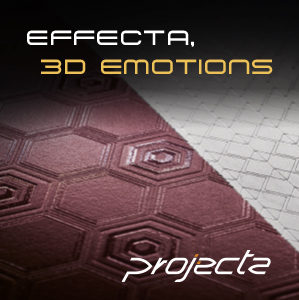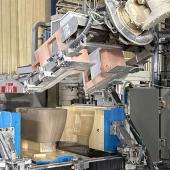The Alfa de Oro awards presented for process innovation
The 35th Alfa de Oro awards presented by the Spanish Ceramic and Glass Society (SECV) have once again gone to innovative technologies developed in the Castellón ceramic district. The prestigious awards were presented to Torrecid, Vidres, Sacmi Iberica and Tejas Borja during a ceremony held on the first day of Cevisama.
Torrecid received the award for developing frit- and glaze-based ceramic inks capable of producing distinctive effects on ceramic (for example the metallised effect for third firing). Vidres won its sixth Alfa de Oro award for the Rainbow project, a system that controls the generation of microcracks so as to simulate the multicoloured optical effect responsible for differences in aesthetic characteristics in ceramic materials. Sacmi Iberica was presented with the award for the construction of a machine that allows for greater efficiency in digital decoration of large tile sizes, exploiting a surface drying process based on the application of automatically controlled infrared radiation. Last but not least, Tejas Borja won the Alfa de Oro award for its fixing system that allows for the creation of a flat ventilated roof using porcelain tiles.
The Alfa de Plata awards were presented to Macer for its Molde Inteligente project, which involves introducing pressure sensors inside the punch to improve the quality of pressed pieces and cut down production costs, and to Togama for its new interpretation of glass mosaic and the opening of new markets by developing a fungicidal product.

Did you find this article useful?
Join the CWW community to receive the most important news from the global ceramic industry every two weeks





















